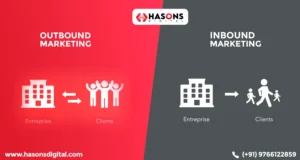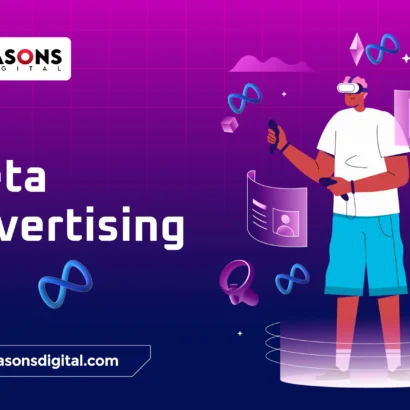Inbound Marketing Vs Outbound Marketing
Marketing is a broad and diverse field, with many approaches competing for the attention of small businesses and digital marketers. From the above, two major models are commonly evident: inbound marketing vs outbound marketing. However, which of these two approaches includes the key to success for your business?
What is inbound marketing?
Inbound marketing is about marketing in the long term and building value for the prospect by providing relevant information. In this case, you do not go around marketing your product or service in an aggressive manner where you are forcing people to buy your goods, but instead, you create the impression that people should come to seek out your goods.
Inbound marketing often involves:
- Content marketing is the development of blogs, eBooks, or videos that can inform or make the intended audience have humorous feelings.
- SEO (Search Engine Optimization): Maximize your chance of customers finding your product by ranking well on the search engines by targeting specific words or phrases.
- Social media marketing involves engaging potential customers most in their daily lives.
- Email marketing: communicating with customers via email or by using the newsletter for the individuals who have already invested their interest in the products.
What is outbound marketing?
Outbound marketing, on the other hand, is the opposite, where businesses themselves initiate a message to consumers. Unlike the previous method, this one is more interruptive, and it targets the maximum possible number of users.
Common outbound marketing includes:
- Television and radio ads: inform a large number of people about something.
- Print Advertisements: Advertising in the newspapers, magazines, and brochures.
- Cold Calling: Telemarketing that uses the phone to reach out to potential buyers of one’s product.
- Direct mail: advertising through logistic branching and sending of fliers and other marketing materials to the physical mail.
- Billboards and outdoor advertising: making people’s gazes and watching eyes fall on the items displayed and sensually craving to buy them.

Key Differences Between Inbound and Outbound Marketing
|
Feature |
Inbound Marketing |
Outbound Marketing |
|
Approach |
Pull (attracting customers) | Push (reaching out to customers) |
|
Cost |
Generally lower |
Generally higher |
|
Audience Targeting |
Highly targeted |
Broad targeting |
| Communication | Two-way (engagement-focused) |
One-way (broadcast-focused) |
|
Customer Trust |
Builds over time |
Immediate but less personal |
Pros of Inbound Marketing
Inbound marketing offers several advantages that can make it an appealing choice for small businesses and digital marketers: The following are the benefits of inbound marketing that make it fit for small businesses as well as digital marketing.
Cost-Effective
However, what customers love about inbound marketing is that the low cost is an inherent characteristic of the process. This greatly affects the social media business because writing good and engaging articles does not require much capital, yet it is more effective than advertising. This makes this type of learning suitable, especially for small business outfits that may not be in a position to afford more sophisticated methods.
Builds long-term relationships
Thus, inbound marketing assists in the formation of a strong bond with potential customers due to the constant provision of useful content in the form of education. This creates customer loyalty and value that can last for a long time, hence creating a long-term customer-firm relationship.
Highly Targeted
Inbound marketing allows for reaching an audience with more subtlety. This paper highlights the necessity of undertaking a thorough assessment of the needs of the target market since it will enable any provider who wishes to tap into this market to set content that will suit the target consumers, thus enhancing the conversion rate.
Pros of Outbound Marketing
While outbound marketing is no longer the preferred method today as there is inbound marketing, it has its benefits. Outbound marketing is not entirely obsolete, especially if its strengths are still fully realized even with the transformation to modern digital marketing.
Immediate Impact
Outbound marketing is effective in the sense that it can quickly produce results. For instance, a television commercial or a catchy billboard ad can, within the blink of an eye, help grab the attention of millions and drive traffic and sales.
Broad Reach
Broadcast advertising, such as television, radio, and newspaper advertising, is cheap and can influence a large market, making it suitable for creating brand awareness. This is quite useful for entities in need of a solid market base to operate and be competitive within a certain range.
Easily Measurable
As a result, most tactics in outbound marketing involve easily understandable metrics. For instance, measuring the number of people who filled out a coupon or web response resulting from a direct mail-out or the number of eyeballs that tuned into a TV commercial is very tangible, readily quantifiable data regarding the efficacy of the campaign.
Cons of Inbound Marketing
Time-Consuming
Developing the articles for your blog and attaining the level of writing that would appeal to them and which will impart knowledge at the same time requires time. From developing the concept to conducting research, writing and designing, and final promotion and sales, it can be a long-drawn process that, at times, may need a steady and continuous effort to be put in.
Requires Expertise
Even though inbound marketing is critical, the core foundations of it are SEO, blogging or content production, and SMM. However, as you may discover after trying a project you may not achieve the desired results if you have no skills hence the need to either learn it yourself or hire professional people to do it for you.
Slow to Generate Results
One thing that should be understood is that the outcome of inbound marketing is not always quick, unlike in outbound marketing. However, for most, it could take some time to be able to make contact with the people, attract them, create a level of comfort and familiarity, and then get the outcomes, which are not limited to conversion and sales.
Cons of Outbound Marketing
Similarly, outbound marketing has its drawbacks:
High Costs
Most of the traditional methods of marketing are usually costly. Television, radio, newspapers, and especially outdoor advertisements may be very expensive to place, something that may not be affordable by firms with low capital.
Interruptive Nature
By its nature, outbound marketing might be regarded as invasive, interfering with the audience’s experience. This might easily create a negative image of your brand among consumers, especially when the message is unwelcome or inconsequential.
Less Targeted
Outbound marketing usually targets a massive audience, as compared to inbound marketing. However, this can be beneficial in the aspect of branding, although it may not guarantee higher sales as the message could easily be off-putting to some people.
Conclusion
Analyzing the discussion between Inbound Marketing Vs Outbound Marketing approaches, it can be stated that no strategy fully prevails over the other. While both methods are good, each has its advantages and limits, and thus, the approach to be used depends on your business goals, available capital, and geographical focus, among other factors.
In the case of small companies and digital marketers, it could be best to find a mix between the approaches used in inbound and outbound marketing.
| You’re reading a Differences Between Inbound and Outbound Marketing article. Explore more articles. | |
| Inbound vs Outbound marketing | Digital Marketing channel |
| Outbound Marketing | Display Advertising |
Inbound Marketing Vs Outbound Marketing
- What is inbound marketing?It means attracting the client instead of interrupting their favorite program with a commercial break. This strategy involves issues like blogging, videos, and social media to interact with the target individuals.
- What is outbound marketing?On the other hand, outbound marketing is defining a business’s message and making it available to the consumer without waiting for the latter to seek it out. It is a traditional method of advertising, and it involves television, print media, and advertising by cold calls.
- How do inbound and outbound marketing differ?Inbound marketing segments customers based on personas and provides useful information consumers look for while outbound marketing promulgates messages through conventional advertising.
- Which is more cost-effective: inbound or outbound marketing?Overall, again, inbound is the cheaper strategy as it leverages content creation with the audience seeking the product. However, it can be expensive sometimes because of the costs incurred in advertising, which are attributes of outbound marketing.
- What are the main benefits of inbound marketing?In general, inbound marketing is effective for small business institutions because as for the idea, it is cheaper to be implemented than outbound marketing, apart from being tailored for the customer.
- Which marketing approach is better for small businesses with limited budgets?Generally, for enterprises with not much funds at their disposition, the inbound one is better since it is cheaper and is aimed at pulling clients by offering them relevant content and nurturing them.



